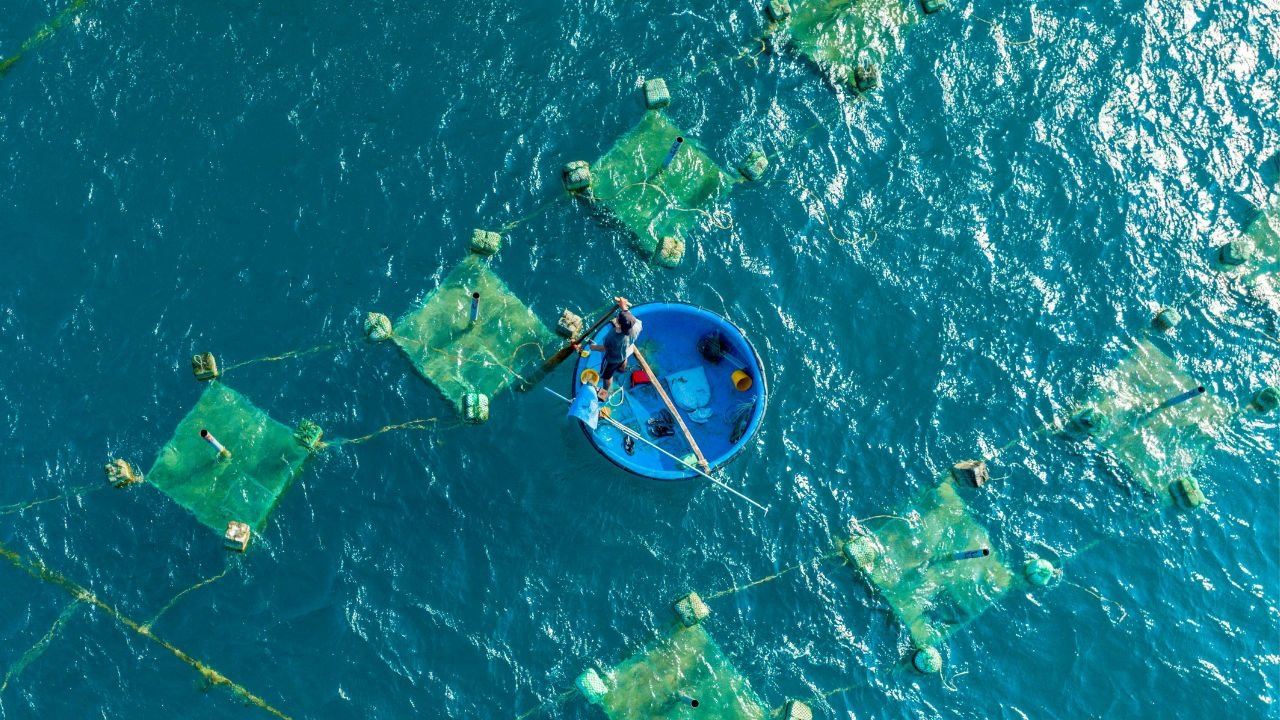
Biofloc fish farming is an eco-friendly way to raise fish that has become quite popular lately. This sustainable method is especially effective in India, where the demand for fish is rising and there's a need for efficient, environmentally conscious farming techniques. In this article, we'll explore the basics of biofloc fish farming, its benefits, the best fish species to use, how to prepare biofloc ponds, manage water quality, and feed the fish effectively.
Understanding Biofloc Fish Farming
Biofloc fish farming involves creating a controlled environment where beneficial bacteria, algae, and fungi thrive. These microbes convert waste products, such as uneaten feed and fish excreta, into protein-rich feed for the fish. This process helps maintain water quality and reduces the need for frequent water changes, making it a cost-effective and sustainable practice. The primary concept behind biofloc fish farming is nutrient recycling within the system.
Benefits of Biofloc Fish Farming
1. Cost-Effective
Biofloc fish farming is highly cost-effective. By converting waste into valuable feed, farmers can reduce the amount of commercial feed required, lowering overall farming costs.
2. Enhanced Water Quality
The biofloc system improves water quality by converting harmful waste into helpful biomass. This reduces the need for frequent water changes, saving both water and time.
3. Sustainable and Environmentally Friendly
Biofloc fish farming reduces waste discharge and promotes nutrient recycling, making it a sustainable and environmentally friendly choice, especially in areas with limited water resources.
5. Higher Productivity
Biofloc provides an additional food source for fish, promoting faster growth and higher productivity. This can lead to increased profits for farmers.
6. Disease Prevention
The beneficial microorganisms in the biofloc system help prevent the spread of pathogens among fish, reducing the incidence of diseases and mortality rates.
7. Zero Water Exchange System
Biofloc fish farming operates on a zero-water exchange system, conserving water and reducing the labor and costs associated with water management.
Selecting the Ideal Fish Species
Choosing suitable fish species is crucial for the success of biofloc fish farming in India. Not all fish species are ideal for biofloc systems. Some of the best-suited species include:
1. Tilapia
Tilapia is popular for biofloc fish farming due to its hardiness, fast growth, and high tolerance to varying water conditions, making it an excellent choice for beginners.
2. Catfish
Catfish thrive in low-oxygen environments and have a high feed conversion ratio, making them a profitable option for biofloc systems.
3. Carp
Carp species, such as rohu and common carp, are resilient and adaptable to different water conditions, making them a viable option for Indian farmers.
4. Shrimp
Although not a fish, shrimp can be successfully integrated into biofloc systems. They benefit from the biofloc environment, which provides additional nutrition and helps maintain water quality.
Implementation Steps
Proper pond preparation is essential for the success of biofloc fish farming. Key steps include:
1. Site Selection
Choose a location with good access to water and power sources and adequate drainage to prevent waterlogging.
2. Pond Construction
Construct the pond with suitable lining material to prevent water seepage. Ensure proper inlet and outlet systems for water management, and maintain sufficient depth for the required water volume.
3. Installing Aeration Systems
Aeration is essential for maintaining oxygen levels. Install devices such as air blowers, diffusers, or paddlewheel aerators to ensure adequate oxygen supply.
4. Setting Up Biofloc Culture
Introduce beneficial microorganisms into the pond and promote biofloc growth by adding organic matter, such as molasses or rice bran. Monitor biofloc development before introducing fish.
5. Water Quality Management
Maintaining optimal water quality is vital for biofloc fish farming. Key aspects include:
6. Monitoring Parameters
Regularly monitor key water parameters such as pH, temperature, dissolved oxygen, ammonia, nitrite, and nitrate levels. Maintaining these parameters within the optimal range is crucial.
7. Biofloc Density
Maintain appropriate biofloc density. Adjust feeding and aeration based on the density to avoid oxygen depletion and ensure sufficient nutrition for the fish.
8. Water Exchange
While biofloc systems minimize water exchange, occasional partial water changes may be necessary. Regularly remove excess sludge and waste materials from the pond.
9. Aeration
Ensure continuous aeration to maintain dissolved oxygen levels, supporting the metabolic activities of both fish and microorganisms.
Feeding Techniques in Biofloc Fish Farming
Effective feeding strategies are crucial for the success of biofloc fish farming:
1. Balanced Diet
Use high-quality commercial feed supplemented with natural sources such as biofloc and live organisms. Adjust feeding frequency based on the fish’s growth stage and biofloc density.
2. Monitor Feed Intake
Regularly monitor feed intake and adjust feeding rates accordingly. Overfeeding can cause water quality issues, while underfeeding can affect fish growth and health.
3. Use of Probiotics
Incorporate probiotics into the feed to enhance digestive health and promote the growth of beneficial microorganisms.
4. Unlocking Your Growth
Proper training is essential for successful biofloc fish farming. Training equips farmers with the knowledge and skills for effective pond preparation, water quality management, and feeding techniques. Investing in training can maximize the benefits of biofloc technology, improve productivity, and ensure the sustainability of farming practices.
Conclusion
Biofloc fish farming in India offers a promising and sustainable approach to fish cultivation. By understanding the principles of biofloc fish farming, its benefits, and best practices, farmers can achieve higher productivity and profitability. With proper planning, water quality management, and feeding techniques, biofloc fish farming can revolutionize the aquaculture industry in India, providing a reliable and eco-friendly solution for fish production.
(Inputs taken from ICAR-CIARI, National Fisheries Development Board)
















